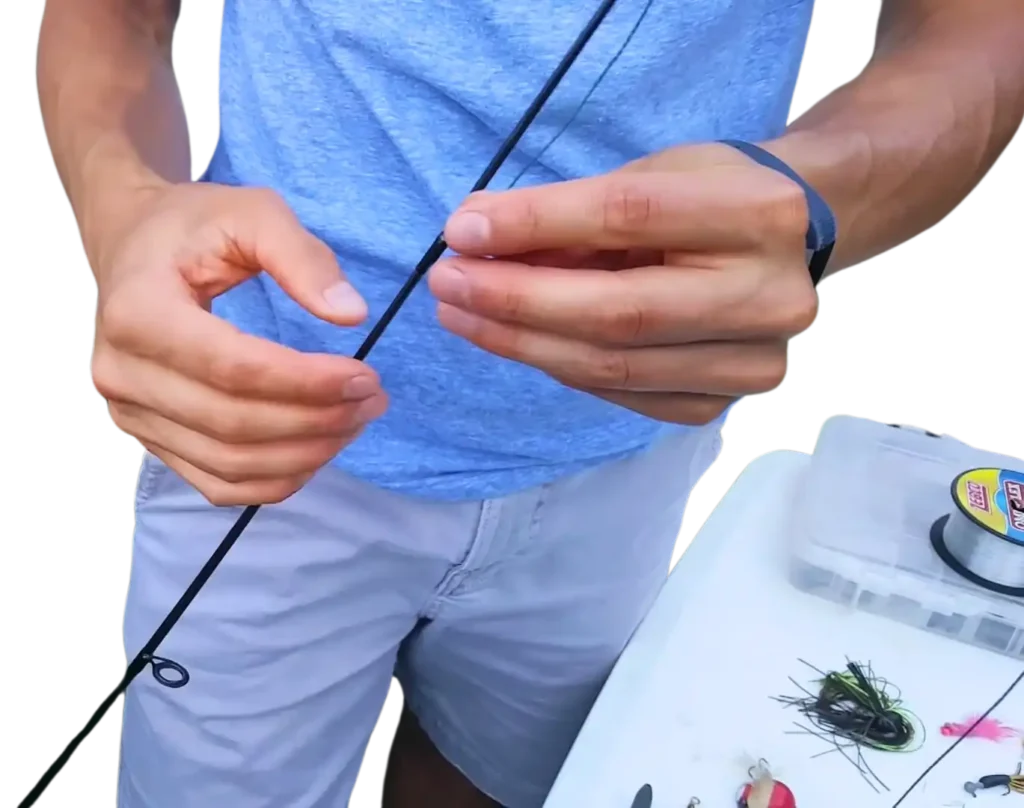
When it comes to stringing your fishing rod, you cannot just buy a random fishing line and use it on your fishing rod. We know that there is a vast variety of fishing rods out there that are built to suit several different techniques. In the same way, we have a vast variety of fishing lines. Some come with thin diameters and light weights and others vice versa. This depends on the fishing environment that you are going to fish in or the size and behavior of your target fish. For instance, you cannot use a thin fishing line on your deep-sea adventures. For that, you’ll need a tough line to assist you in your adventures.
There are a lot of factors that you have to keep in mind before jumping to a conclusion. You should be aware of the build of your fishing rod, the reel it uses, the types of fishing lines, and several other important aspects. So, without wasting your time further, let us dive into our article.
Why you should properly string your fishing rod?
Did you know how much resources, time, and energy you can save by stringing a fishing rod properly? A properly strung fishing rod not only improves your fishing experience but lands you a fish. It saves you money by keeping equipment-related issues to a minimum. By stringing your fishing rod you can even have a fun fishing experience, whether you are fishing alone or with your family. Here are a few key advantages of making sure your fishing rod is strung correctly.
Benefits of properly stringing your fishing rod:
1# Casting:
When you string a line correctly on a fishing rod it reduces friction and minimizes line memory. This helps you to cast smooth and longer casts and this imposes no damage to your fishing rod. It also improves the accuracy and distance when you cast your lures and baits.
2# Sensitivity:
By stringing the rod properly it becomes easier for you to detect the fish nibbles and strikes as it improves the sensitivity of your fishing rod. By knowing what is happening at the end of your line, it aids you in reeling the fish in more quickly.
3# Line Strength:
If your fishing rod’s lines are done correctly, it assures your rods have much higher strength. Letting you reel in bigger fish without your rod getting damaged in the process. If your knots are properly done, then the chances of your fishing rod breaking during fish fights lessen drastically.
4# Line Twist:
When you are stringing your rod correctly, it helps you prevent line twists. Line twists can lead to tangles and reduce casting distance. Your fishing line does not get damaged easily if you keep the chances of line twists to a minimum.
5# Accuracy:
Properly strung rods help you to cast your bait more accurately, thereby improving your chances of landing your cast exactly in the targeted place. Such as near undersea structures or hiding spots, your chances of targetting fish increase.
6# Lure Action:
The right fishing line on your reel ensures that your lures or baits work properly. Different fishing lines have different buoyancy and sink rates, which affects how your fishing lures behave. Stringing correctly allows you to effectively control this activity.
7# Less Tangling:
When your fishing rod is properly strung, it has fewer line management concerns. Such as tangles and knots, which can be very irritating and time-consuming to handle during your water adventures.
8# Hook Sets:
A properly strung rod enables quick hook settings. This helps in improving your chances of successfully driving the hook into the fish and securing the hook. For you, to successfully land your catch is essential.
9# Confidence:
When your rod is correctly strung it boosts your confidence and assures you of catching a fish. You know that you have the proper gear for your fishing adventures. It keeps you focused and keeps your head in the game.
10# Line Life:
Properly stringing your rod helps it to last for longer periods. It reduces the wear and tear of your rod and line. This not only helps in gaining more experience with the same kind of rod but it helps you in saving your hard-earned money as well.
11# Landing of Fish:
The primary goal of fishing is to land a good and successful catch. Properly stringing your fishing rod not only increases the chances of you catching a fish but also helps you catch lots of it while enjoying the experience.
Things to Consider Before Stringing a Fishing Rod
Before you string a rod keep this thing in mind that there are multiple important factors that you should consider to ensure an enjoyable and successful fishing trip. For your ease, I have gathered the following key things that you should always have in your mind.
- The first thing is that you should decide on which type of fishing line you should be using. Various options are available to choose from. There are monofilaments, fluorocarbon, braided lines, or other specialized lines that you can use according to your fishing needs and requirements.
- Selecting a suitable pound-test rating for your fishing line is important. The rating will help you to specify the line’s strength which is essential for handling the size of fish you want to catch.
- Another thing to make sure is that the fishing line that you are choosing is compatible with your fishing reel. Different reels have specific line capacities that you should stick to.
- The next thing you should focus on is checking out the fishing environment, where you will be using your fishing rod. Know your surroundings, whether it’s freshwater, saltwater, ice fishing, or specialized conditions. Depending on the environment, specific lines may be required.
- You should be careful about the fishing techniques you plan to use, such as casting, trolling, fly fishing, finesse techniques, etc. Remember, the line you choose should complement your chosen technique.
- Your line choice will greatly influence the type of fish you want to catch. Large and powerful fish will require your heavier lines to catch. To catch smaller species lighter lines would simply do the trick.
- Colour is also important when you string your fishing rod. It helps with the visibility of your cast line. Clear or low-visibility lines are used for clear water, while for murky waters, high-visibility lines are a good option.
- While colour is important. The diameter of the fishing lines is also a necessary thing to know. Thinner lines are used for casting into more distances and they provide you with less visibility. However, thicker lines may cover short distances but they aid in catching larger and heavier species of fish.
- Before stringing a fishing rod, be aware of the line’s memory, which is its tendency to hold the shape of the spool. Lines that have more memory can get tangled and hinder casting performances.
- Plan the knots and leader material you’ll use for attaching hooks, lures, or other terminal tackles. Make sure that the knots you make are suitable for the line type and fishing scenarios.
- Keep on checking on the condition of your fishing line to make sure it is free from any nicks, abrasions, or damage before you string your fishing rod. Any damage found should be replaced immediately.
- You should get notified of any regulations or restrictions about fishing in your area, including line strength and type of limitations, to comply with local law.
- You should consider your budget when selecting fishing lines. Some lines are more expensive than others while they do the same good job. Balancing affordability and quality is essential so that you are not putting too much burden on your pockets.
- Finally, you should take into account your personal past experiences and fishing style. Some anglers prefer specific lines based on their comfort and experience. So, be confident and enjoy your fishing adventures.
Parts of your fishing Rod that are involved in stringing
Have you ever wondered which fishing rod parts are used specifically for stringing your fishing rod? Typically, the first step in stringing your fishing rod is to pass the fishing line through the line guides, starting with the first guide that is closest to the reel. The line will then be fastened to the reel’s spool, making sure it is correctly wound and kept under strain. Your fishing rod and reel configuration performs at its best when the line is properly threaded through these parts, which ensures effortless casting and retrieval. Here are the main key parts that you will need to create your setup.
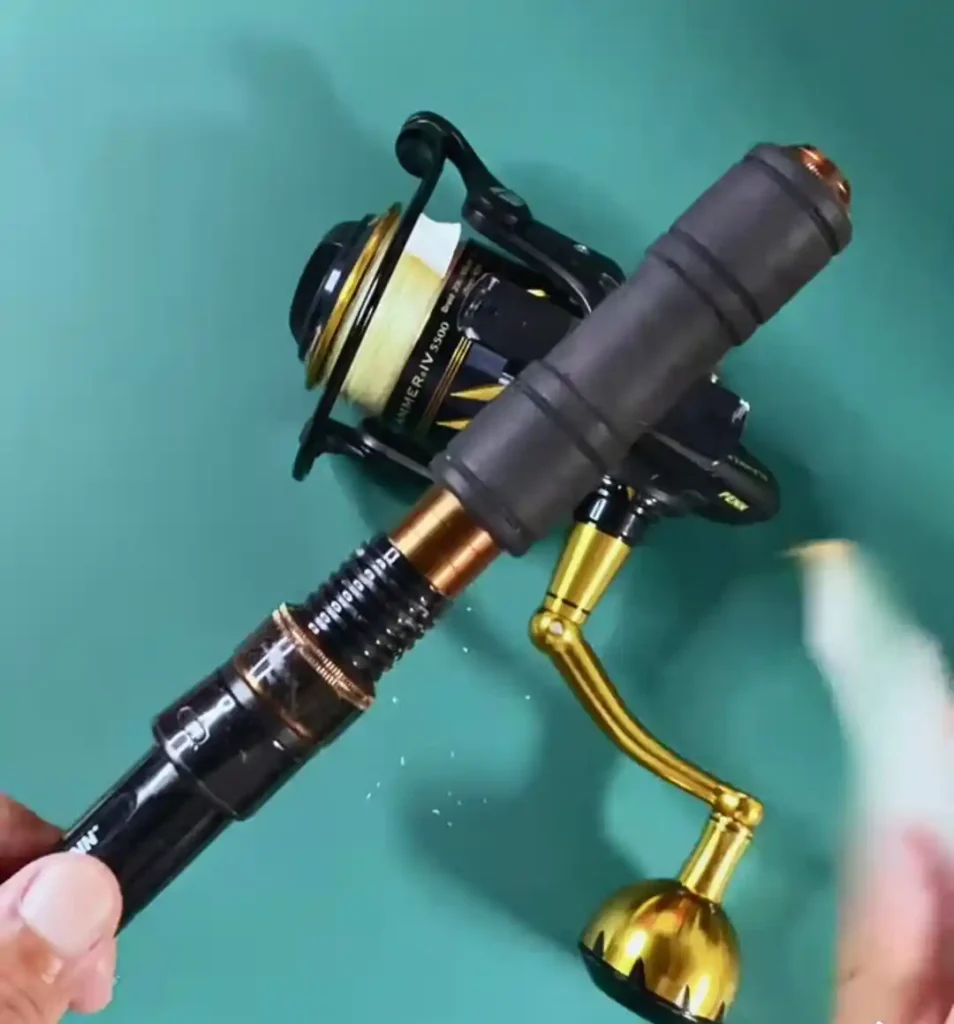
REEL SEAT
The reel seat is the part of your rod where the fishing reel gets joined to the rod. It is normally found close to the base of the fishing rod. The reel is typically held firmly in place by two reel foot slots
REEL
A fishing reel is a mechanical tool used to retain and control the fishing line. It holds your fishing line in place so that there is no tangling. When it comes to spinning reels, it normally has a handle, spool, drag mechanism, and bail, as well as several knobs and settings for modifying the reel’s operation.
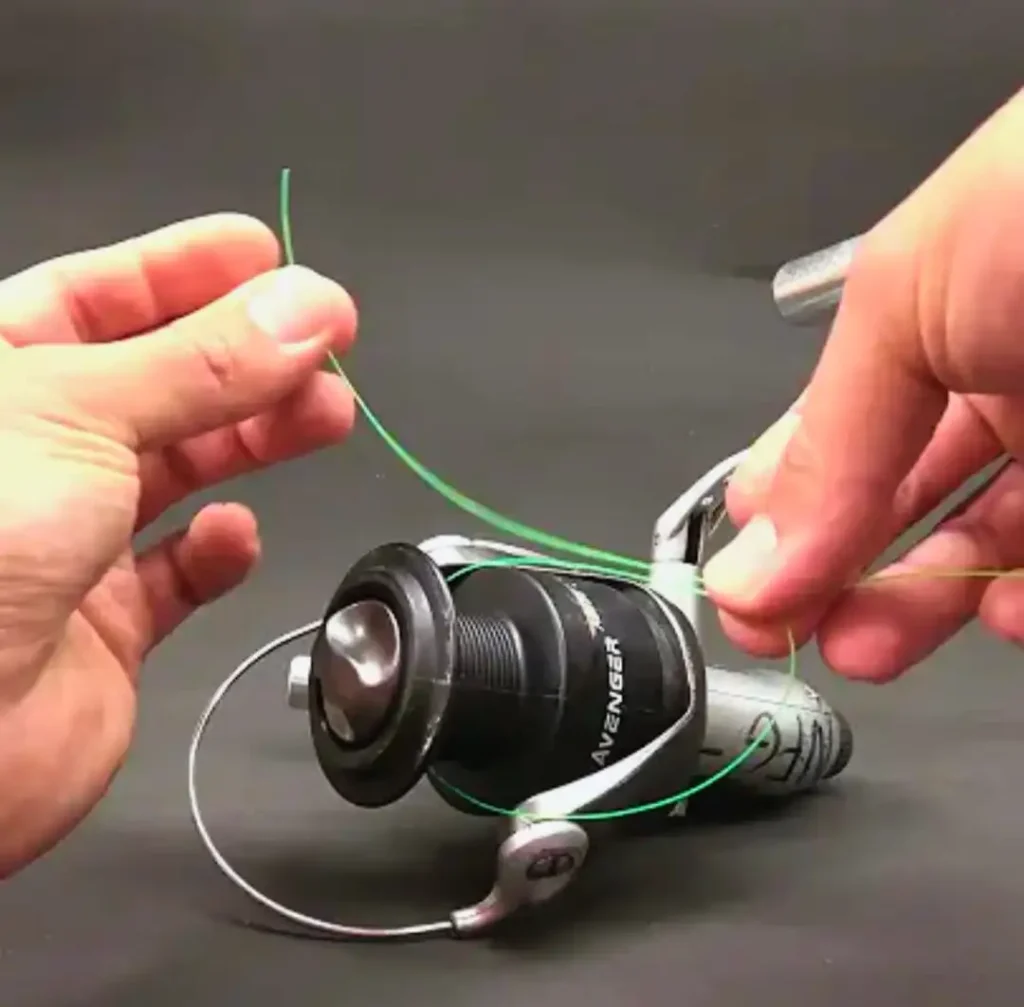
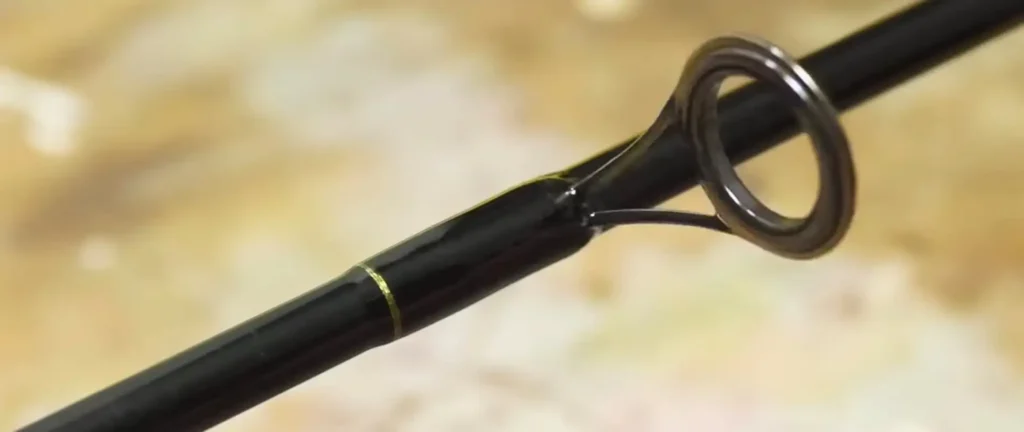
Rod Guides
Rod guides or line guides are tiny eye-like metal or ceramic rings with a circular or oval shape that is affixed to the rod blank. They function to transfer the tension of the fishing line equally from the reel to the tip of the rod.
Tip Guide
The guide at the very tip of the fishing rod is called the tip guide, often known as the tip-top. When casting and retrieving, it is intended to direct the line as it exits the rod. This guide also helps in shifting the tension from the line towards your hands.
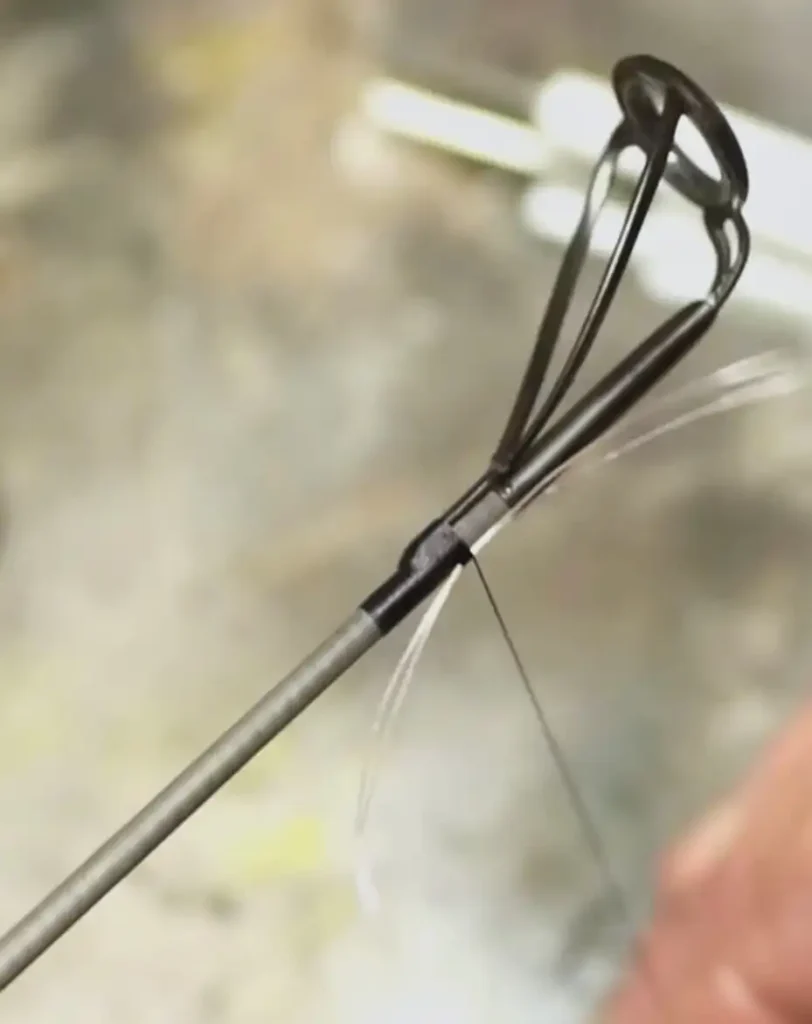
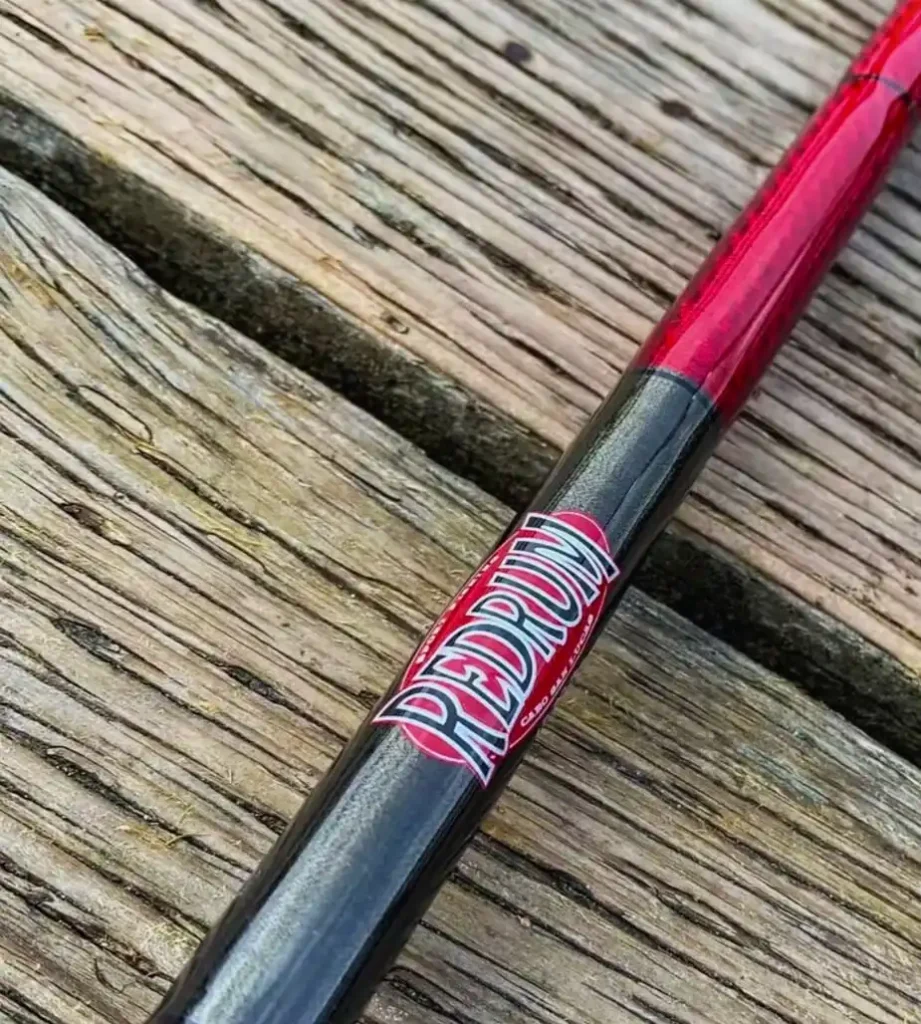
Blank
The fishing rod’s main body, or shaft, is known as the rod blank. It establishes the rod’s structural support and controls its length, motion, and power. Along the length of the blank, you’ll thread the line through the line guides to string the rod. This way the fishing line stays in a straight line.
Handle and Grip
When fishing, you hold the fishing rod’s handle and grip in your hands. They can be constructed from some materials, including cork, foam, or EVA foam, and they offer control and comfort when fishing. You can choose your handle from a variety of options available.
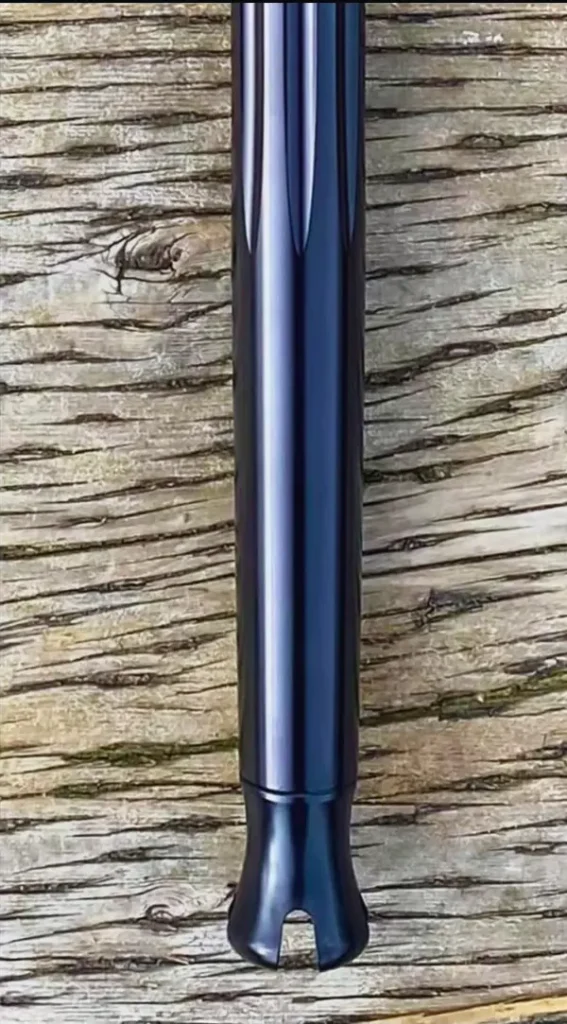
How to string a fishing rod?
Stringing your fishing rod is not a very difficult thing to do. If you are aware of the build and have some knowledge of different parts of your rod, you can easily do it yourself at home. The steps below will help you to string your fishing rod yourself.
Supplies you will need:
You don’t have to gather a lot of materials as you won’t be using them. Just make sure that you have the right fishing line for your rod.
1) Have a fishing rod.
2) Have the right fishing line.
3) Fishing reel.
4) Scissors or a line cutter.
5) knot-tying tool, if you need any.
Step#1: select the right fishing line
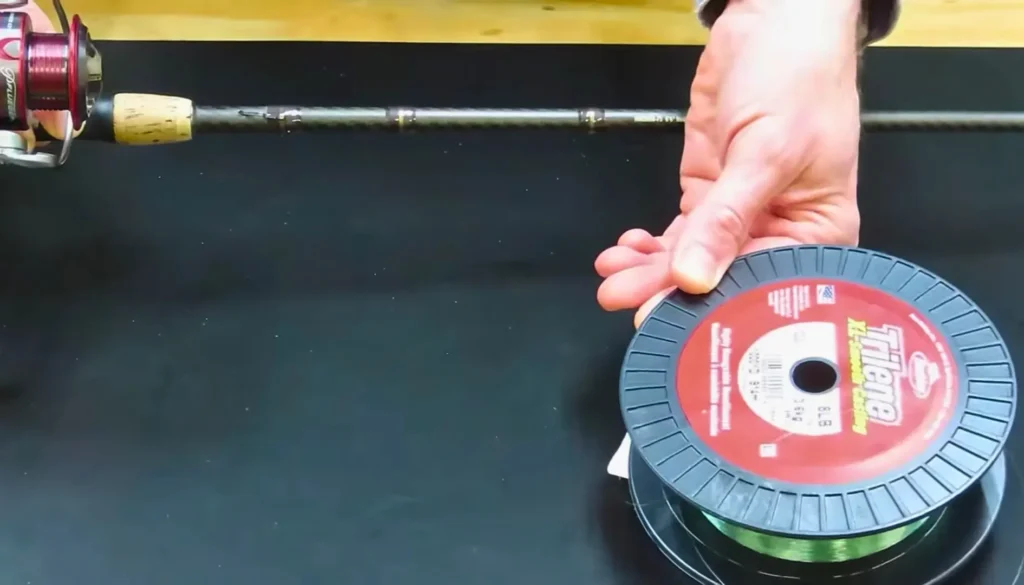
You have to select the right fishing line for your fishing rod. Choose the appropriate fishing line such as it can be monofilament, fluorocarbon, or even braided. Different fishing lines come with different requirements and benefits, so do some research. Also, check the line weight based on your target species and fishing conditions.
Step#2: threading the fishing line through the guides
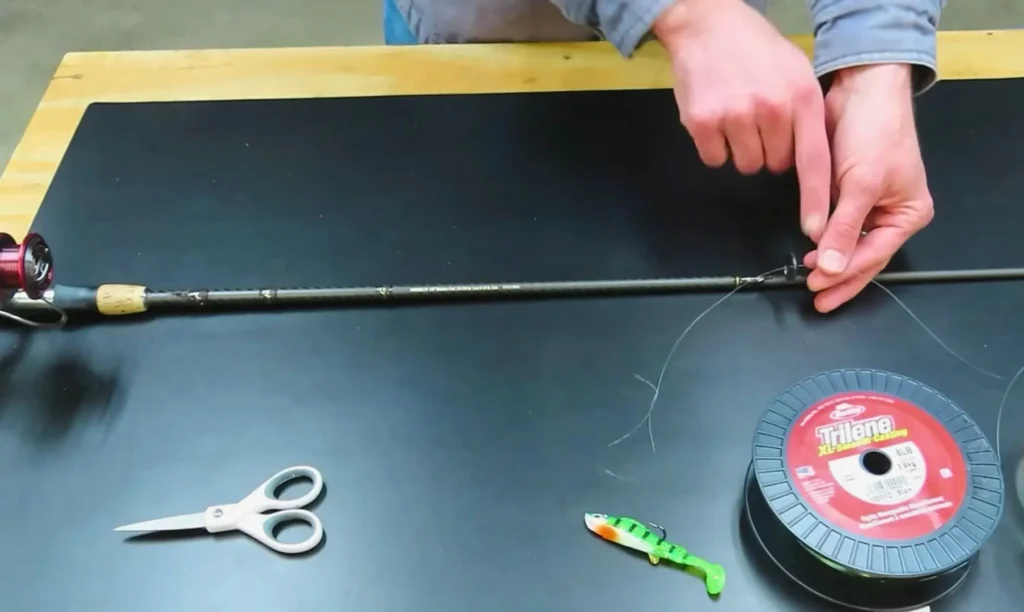
This step is about threading the fishing line through the guides. Start from the rod tip and thread the line through the eyelets of each guide present on your fishing rod. Make sure that the line is correctly seated in each guide. Also, keep sure that the line is not tangling at any point. This will help you in preventing the tangles.
Step#3: attach the reel
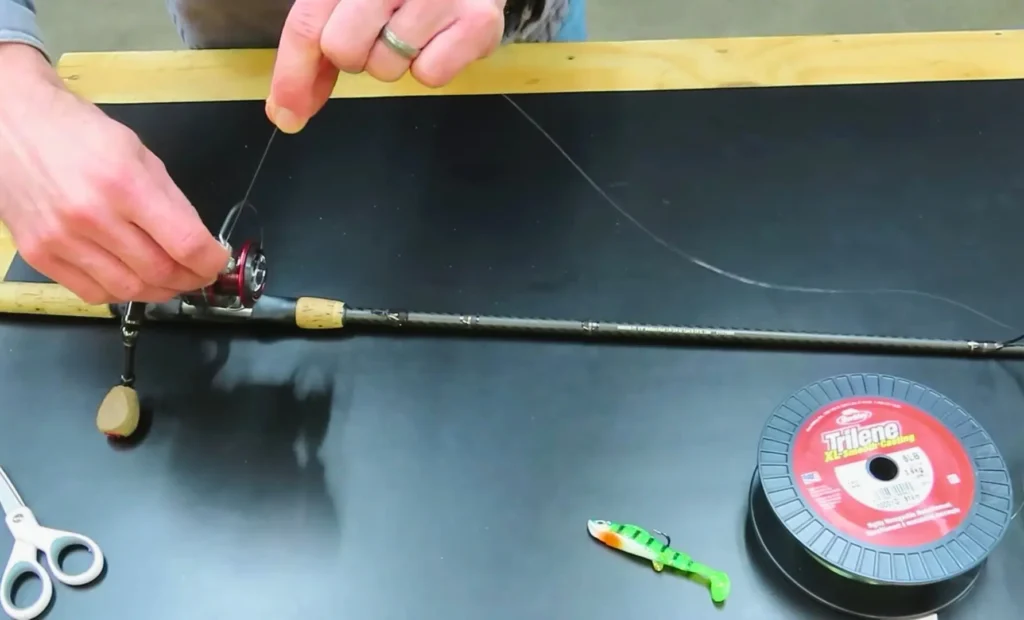
Now you have to attach the reel to your fishing rod. First, securely attach the fishing line to the reel spool. If you have a spinning reel, open the bail and tie the fishing line with any suitable knot. If you have a baitcasting reel, then you have to pass the fishing line through the line guide and tie it with any knot that suits the baitcasters.
Step#4: spool the line
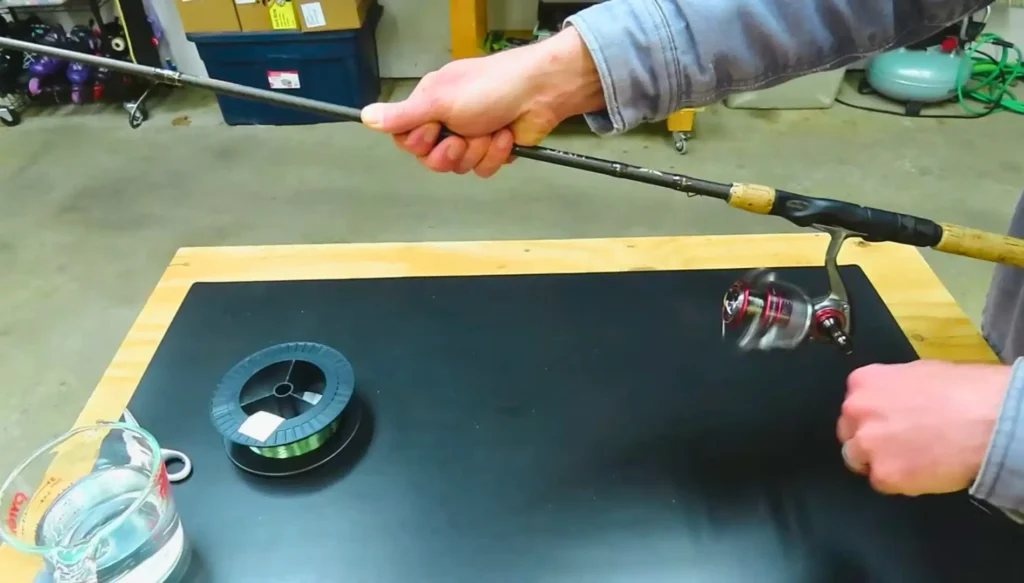
Now that the reel is attached, you have to spool the line. For spinning reels, close the bail and for bait casters, engage the spool. Gradually start to spool the line onto the reel. Make sure that it is laid evenly with tension. Now, use your thumb to guide the line. For bait casters, you have to prevent backlashes during this.
Step#5: tight and trim the knots
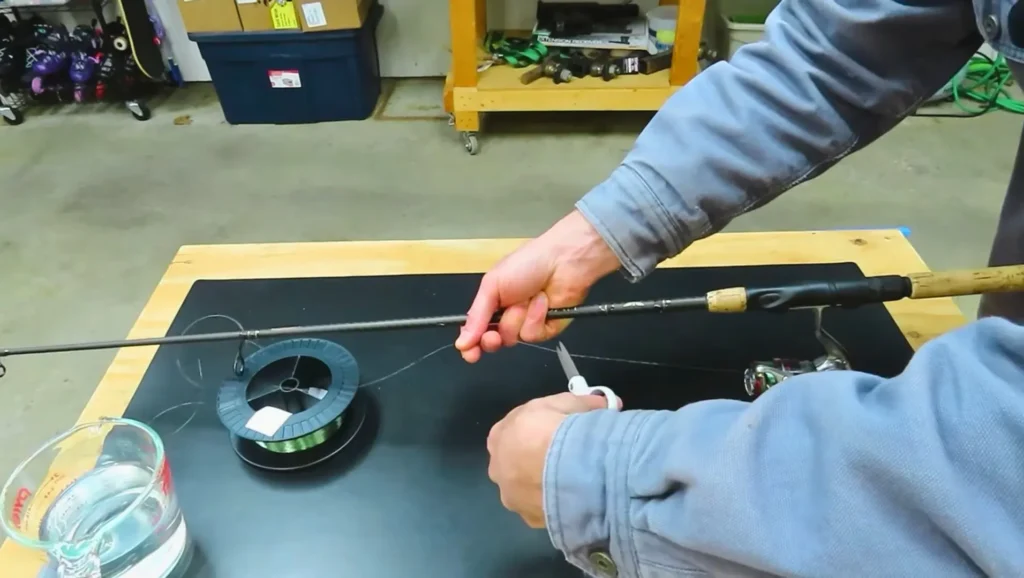
This step is about tightening and trimming the knots. Make sure that all knots related to reel and tackle are firm and secure. If you see that are any excess tags, then trim them. If you leave them like that, they can cause tangles and interference by disturbing the straight line.
Step#6: Inspect the whole line
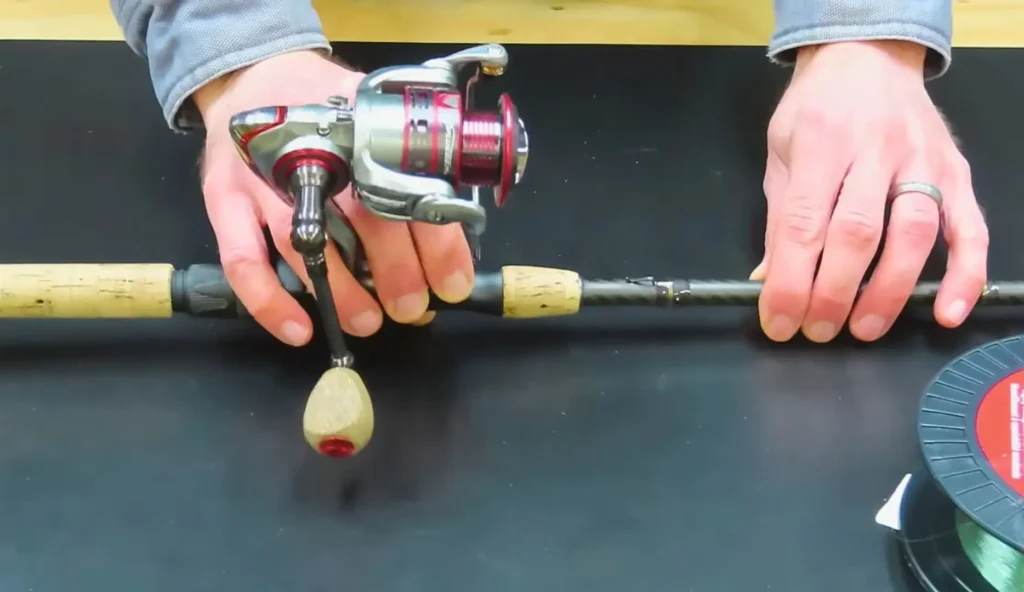
Make sure that the whole line is in good condition. If there are any abrasions or weak spots, replace them during inspection. Or this can lead towards like breakage. Then tie on the hooks, lures, or any other terminal tackle. Use suitable knots for this such as clinch knot or Palomar knot. You can use other knots as well but just make sure that your knot can hold.
Step#7: adjust the drag settings
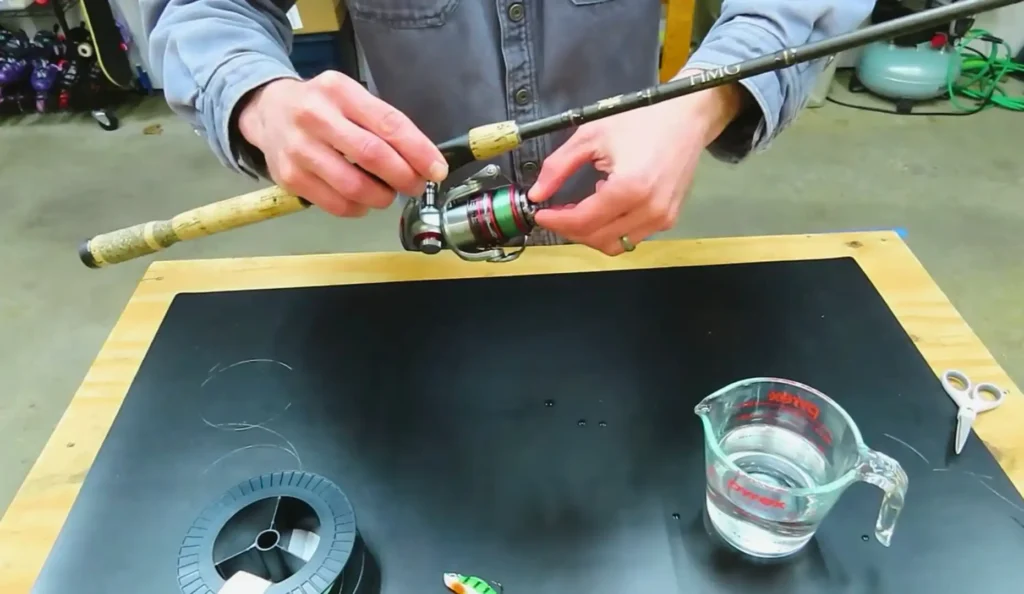
Now you have to adjust the drag settings. You have to set the drag system of your reel to the appropriate tension for your target species. To set the hook you should know that it should be tight enough but allow the fishing line to release under strong fish pressure.
Step#8: testing
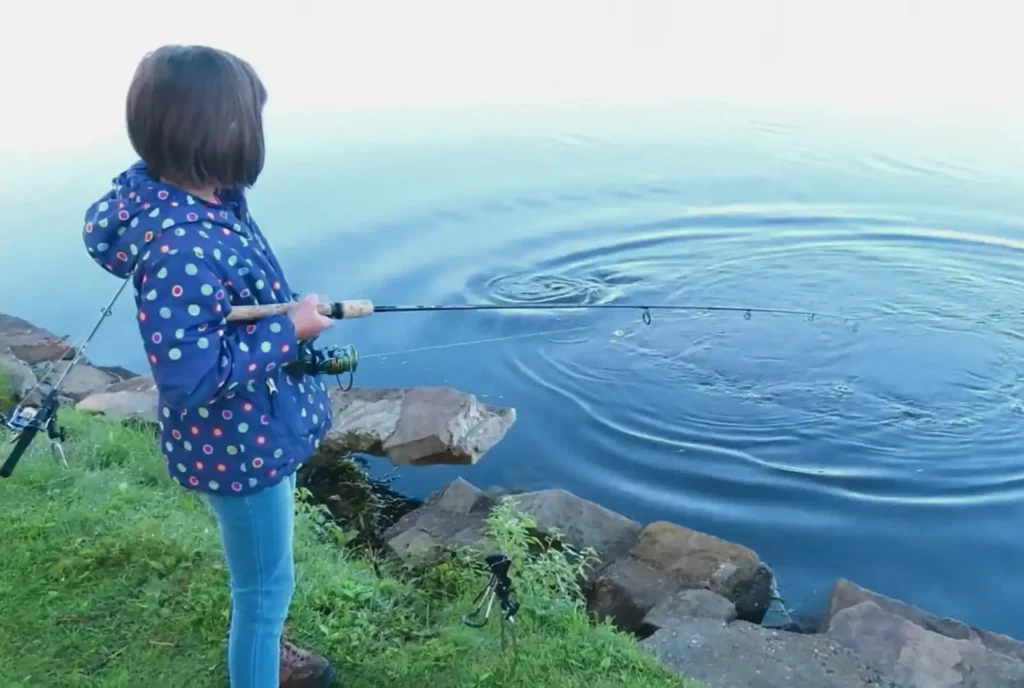
The last step is about testing. Before actual fishing, make a few testing casts. Make sure that the line flow is smooth and the setup feels balanced. Recheck the knots and connections. Keep inspecting them throughout your fishing trip to ensure that they are secure and safe.
Stringing a pre-spooled rod:
Well, the process of stringing the rod is always as same as the one described above. However, a pre-spooled rod is a rod that comes with a fishing line that is already attached to it. You just have to make sure that the fishing line is right, accurately attached and there aren’t any further adjustments needed.
For this, carefully examine your fishing line. You can use your fingers to rub against the fishing line. This way you will be able to know if there are any kind of abrasions, nicks, or weaknesses in the already attached line. Make sure that the reel handle works smoothly with the fishing line and you will be able to cast. If there are your desired hooks or lures attached to the line then leave it be. If you have to change them, then make sure that the knots that you are using are good enough to hold them.
Other than all of this, you can also check if there is any excess line. If there is, then do trim the excessive part. You can also check for loose components. If you find that all of the above tips go well with the fishing rod, then you can safely use it for your fishing adventures.
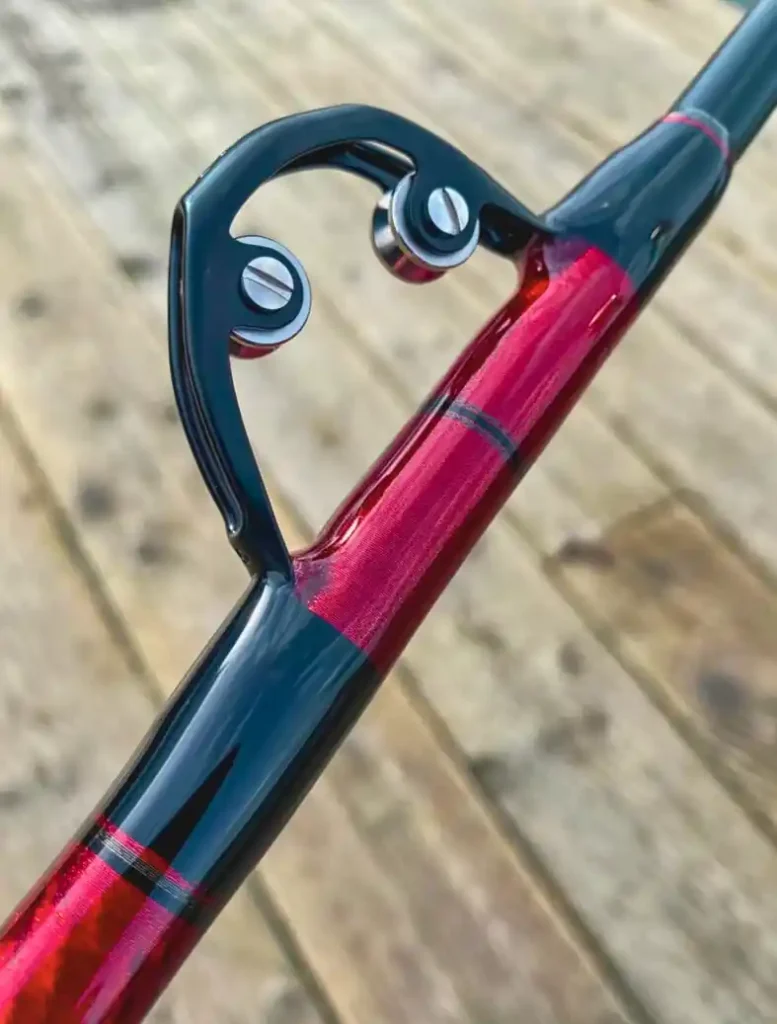
Stringing rod with roller guides:
There isn’t any difference between stringing a fishing rod that has roller guides and a rod that has standard guides. Roller guides are differently designed in a way to lessen the line friction with the guides. However, threading the line through them is the same as the standard method. Just make sure that you are careful with the movable guides and that your line flows smoothly during testing.
Changing the fishing line on your fishing rod:
You already know how to string your fishing rod. If your rod has the old line attached to it, then it is not that much of a big deal. You just have to cut it close to the spool with the help of scissors. Responsibly dispose of the old line. You can also give the line to tackle shops that recycle used fishing lines so there is less waste in your environment.
Different Fishing reels and their precautions while stringing
Fishing reels are one of the most important components of fishing gear, and they come in different types. Each is designed for specific preferences and fishing techniques. Your fishing style, target species, and personal tastes will all play a role in selecting the best reel. Similarly, because of completely different constructions of each, there are some precautions to be taken for different reels while stringing them. Make sure that you have these in mind.
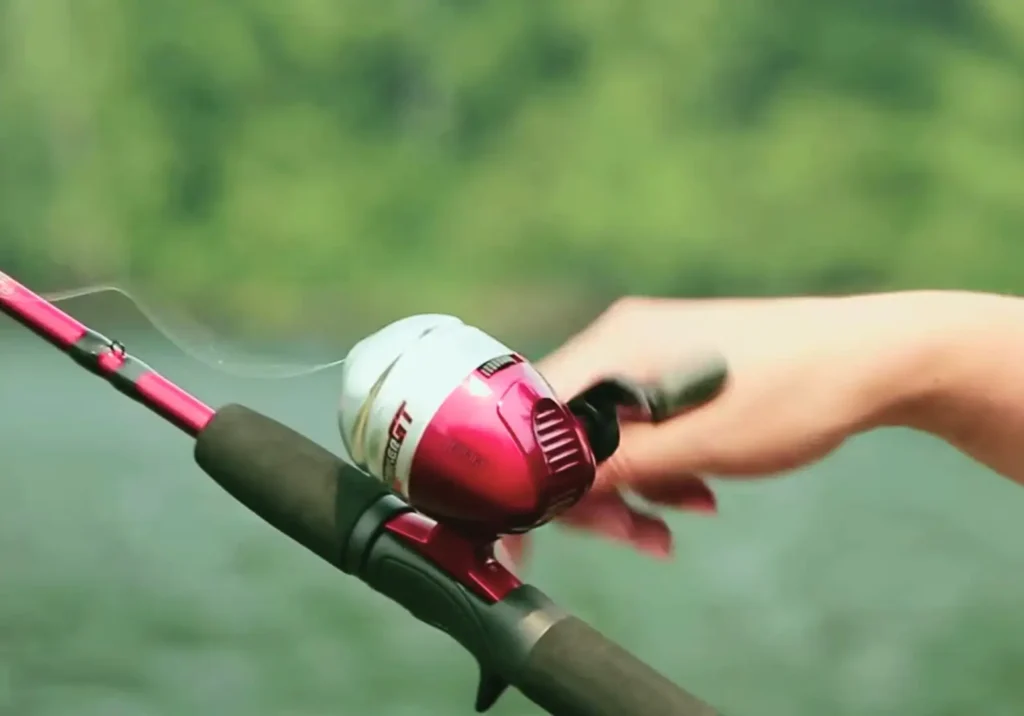
Spincast Reel
These are the simplest and most user-friendly type of fishing reel. They have a closed-faced design with a cover that protects the line and a pushbutton release for casting. They have a limited cost distance and accuracy compared to other real types. For a spincasting reel, you have to ensure that the line passes through the cover hole correctly. Misalignment can cause the line to snag or create a lot of resistance especially when you are casting. Secondly, you should be avoiding overlaps as they may lead to tangles and affect the reel’s smooth operation.
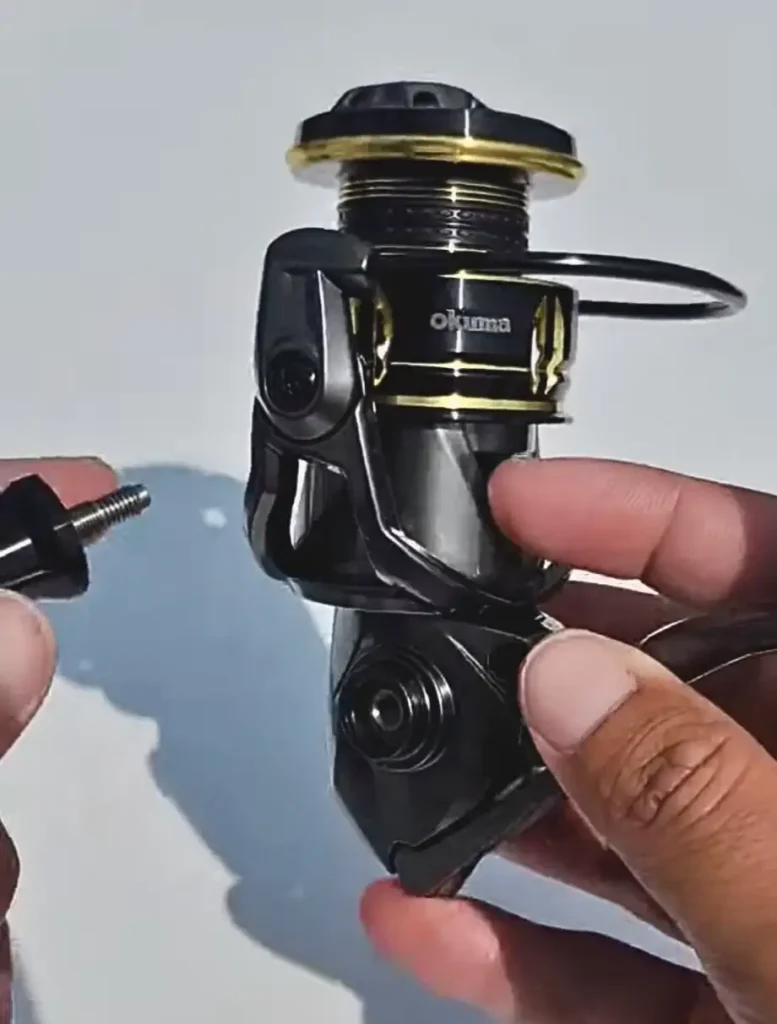
Spinning Reel
Spinning reels have an open-faced design with a fixed spool. The line is released by a bail system that flips up and down, providing reduced line twists and backlash. While stringing a fishing rod that has a spinning reel, keep two basic things in your mind. They are line twist and the slacking of line. Make sure that the fishing line you are using is free of line twists and is going smoothly. If not, then this can be a problem during casting and retrieving. Secondly, you should maintain a balanced tension for the fishing line. The line, if lose, can cause you a lot of trouble.
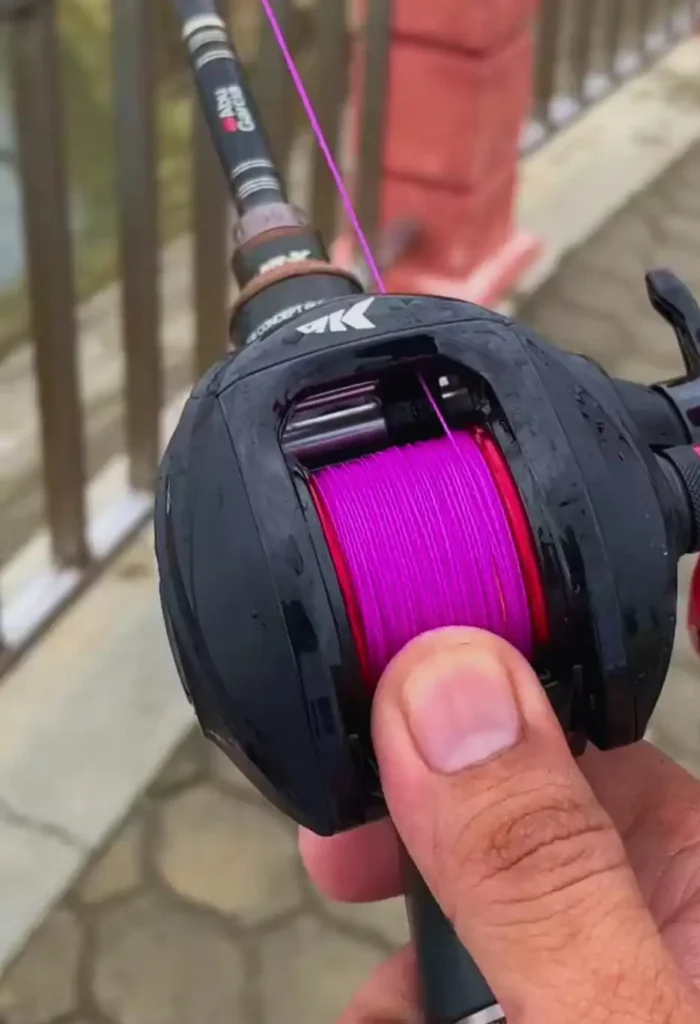
Baitcaster Reel
Baitcasting reels are positioned on top of the rod and have a rotating spool. They are most renowned for their control and accuracy. The first important thing for a string here is to be guided in alignment through the guides. You need a smooth flow and misalignment can cause a lot of friction for the baitcasting reel. Secondly, you should adjust the spool tension appropriately to prevent backlash during casting. This is because too much tension can limit casting distance, while too little can result in tangles.
The most flexible knot for fishing lines:
To tie several kinds of hooks, baits and lures or the string with your reel, you need to know about different knots that you can use with. However, to save your time, I myself have selected a knot that is flexible and easy to work with anywhere. Have a quick look at the steps below:
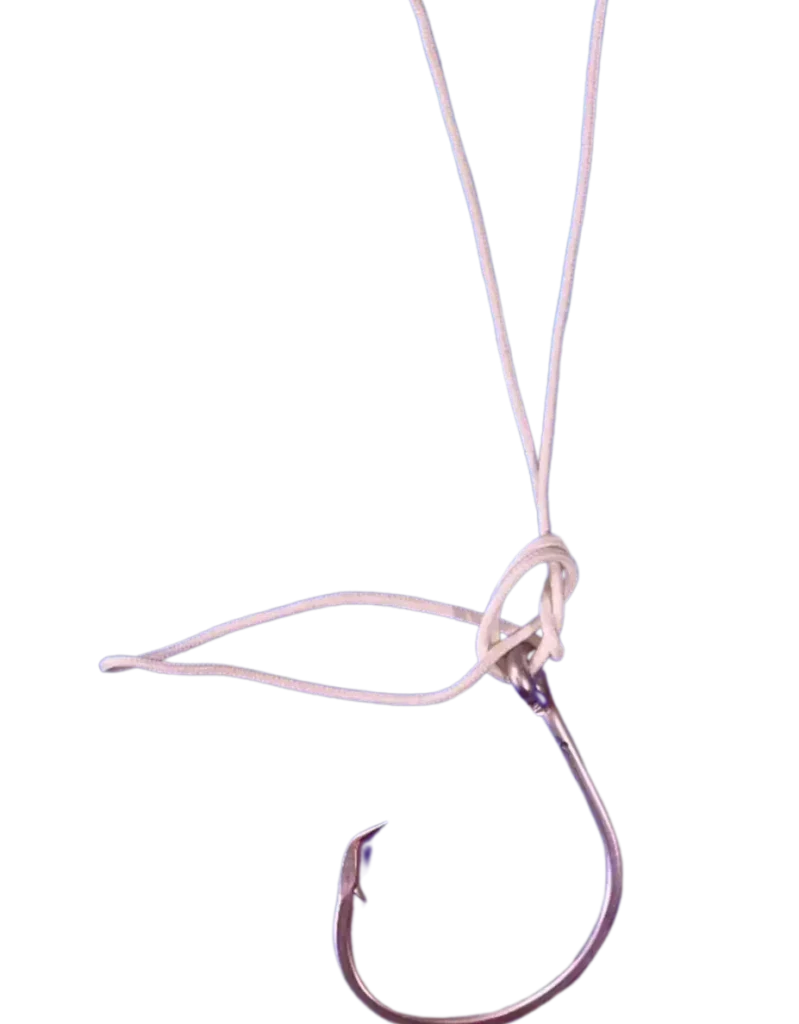
Palomar knot:
This knot is very much suitable for hooks and lures in a wide range of situations. This is the reason that makes it popular among the anglers. You can use it while tying the string with reels. You can also use this knot for attaching hooks and lures.
Step#1 For this knot, you have to double almost 5 to 6 inches of line and then pass it through the eye of the hook or lure.
Step#2 With a double line, create a loop by tying an overhand knot.
Step#3 Then pass the hook or lure through the loop and pull both of the ends to tighten the knot.
If still not clear, you can watch the YouTube tutorial here.
Fishing Environments for Fishing Lines
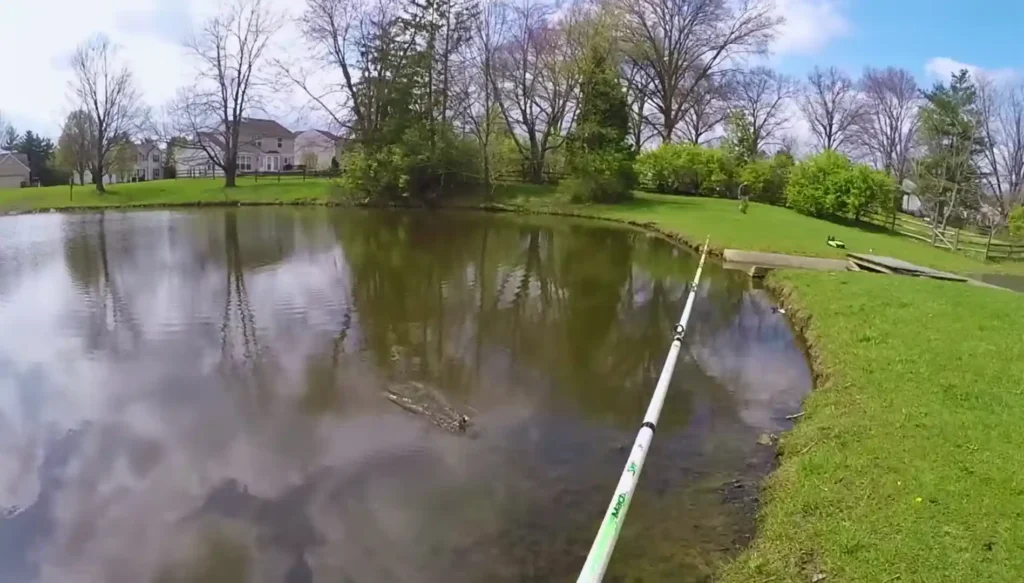
The sort of fishing line you should use is greatly influenced by the fishing environment. Different fishing lines have unique characteristics that make them more appropriate for a variety of settings and circumstances. Consider the target species, the fishing method, and any other special aspects of your fishing area when choosing a fishing line for a certain habitat. To adjust to shifting conditions, it’s a good idea to keep a range of fishing lines in your tackle box. I have gathered some information for you below on how to pick the ideal fishing line for various fishing situations.
1# Freshwater Fishing:
Lakes, rivers, ponds, streams, and other bodies of water are used for freshwater fishing. Monofilament fishing lines are suggested for usage in this area. These lines are adaptable and appropriate for a variety of freshwater fishing circumstances. They are efficient and effective for most types of freshwater fishing. You can also use braided lines. These are fantastic for scenarios with heavy cover and when you need to extract fish from dense foliage. Last but not least, fluorocarbon lines are perfect for clearwater situations where line visibility could be an issue, like trout fishing.
2# Saltwater Fishing:
The ocean, saltwater flats, estuaries, piers, and other saltwater bodies are among them. Braided Lines, which are sturdy and effective in saltwater locations where larger and stronger fish are abundant, are among the suggested Lines in these conditions. They are also quite resistant to abrasion. Fluorocarbon lines are ideal for a variety of marine species since they are very resistant to seawater corrosion and virtually transparent underwater. Then we have monofilament lines, some of which have added corrosion resistance and are made expressly for usage in saltwater.
3# Ice Fishing:
Frozen lakes, ponds, and other bodies of water are good places to go ice fishing.
Monofilament or fluorocarbon lines, which are frequently used for ice fishing because of their low memory and flexibility in cold temperatures, are ideal for these settings.
4# Fly Fishing:
Lakes, Streams, and Rivers, the Fly Lines are advised in this environment. Specialised fly lines, often constructed of PVC or related materials, are required for fly fishing. These lines are made to throw flies accurately and come in a variety of profiles (such as weight-forward and double-taper) to accommodate varied fishing situations.
5# Heavy Cover Fishing:
Vegetated, weedy, and built-up areas. The recommended lines to use in this environment are braided lines. Because braided lines provide the strength and abrasion resistance required to extract fish from dense cover and structural elements, they are the best choice for heavy cover fishing.
6# Deep-Sea Fishing:
Long Distance, Deep Waters, a braided line is the preferred type of line to use under these conditions. Targeting huge, imposing animals in deep water is a common practice in deep-sea fishing. Braided lines offer the durability and sensitivity needed in these situations. To limit line visibility and offer shock absorption close to the bait or lure, monofilament or fluorocarbon lines are utilized.
7# Trolling:
Suitable in large or open water bodies. Monofilament and braided lines, which are frequently used for trolling, are the recommended lines for usage in these conditions. While the braided line delivers higher strength and less line drag in the water, monofilament offers some stretch.
8# Rocky or Rough Bottom Fishing:
Rocks, reefs, and areas with submerged structures. Braided lines, which are abrasion-resistant and able to survive the rigors of fishing in areas with rocky or rough bottoms, are recommended lines to use in these conditions. To limit visibility close to the bait or lure, think about using a fluorocarbon leader.
9# Muddy or Murky Water Fishing:
Conditions of Turbid Water. Monofilament lines are advised for usage in these conditions since they are visible in murky water and can make it easier to trace the line and identify strikes.
Maintenance of Fishing Rod Line
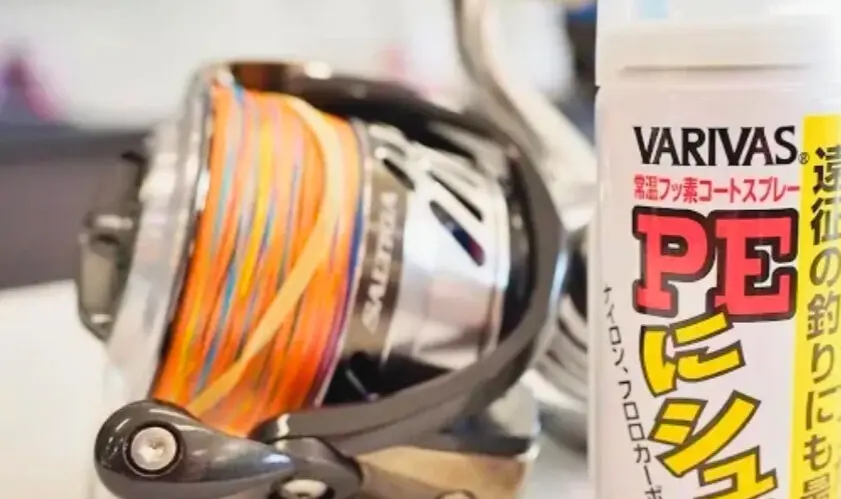
Your fishing line needs to be maintained if you want to make sure it performs well and lasts a long time. The incidence of break-offs during fishing expeditions can be decreased and line damage can be avoided with proper care and maintenance. Maintaining your fishing rod line can increase its lifespan and prevent annoying line-related problems when you are fishing. A more enjoyable and productive fishing experience will result from routine inspection and adequate maintenance.
Below I have gathered some tips for keeping your fishing rod line in good shape.
Tip 1: Inspect your line frequently. Check your fishing line thoroughly before each outing to look for signs of wear, damage, or abrasions. Check the line for nicks, frays, or tangles.
Tip 2: Make Your Line Clean. Cleaning your fishing line is crucial after salty or unclean conditions fishing. This can be accomplished by lightly reeling the line onto a clean cloth or paper towel. This assists in removing dirt, salt, and debris.
Tip 3: Steer clear of excessive sun exposure. Fishing lines can become weakened over time by UV rays from the sun when exposed for an extended period. Keep your fishing rod and reel out of direct sunlight while not in use.
Tip 4: Put line conditioners to use. To protect and increase the lifespan of your fishing line, think about applying a line conditioner or fishing reel lubricant. Additionally, these products help lengthen the casting range and lower friction.
Tip 5: Spool your line properly. Make sure the line is loaded evenly and with the right tension when spooling your reel for the first time. Casting and line management problems might come from overfilling or underfilling the spool.
Tip 6: Eliminate Line Twist. The twisting of the line can cause tangles and shorten the casting range. Reduce line twists by keeping the correct line tension when reeling and utilizing swivels as necessary.
Tip 7: Replace the broken line. It is essential to replace your fishing line if you discover any substantial wear or damage while inspecting it. Fishing losses can be caused by weakened or compromised lines.
Tip 8: Change Line Every Year or As Necessary. Especially if you fish frequently or in challenging conditions, you might want to consider changing your fishing line once a year. Alternately, alter the line if you see a drop in its performance or strength.
Tip 9: Be Kind to Knots. Handle the line carefully while tying knots to attach hooks, lures, or other tackles to prevent weakening it. Always pay close attention to the knot-tying instructions.
Tip 10: Lubricate your reel. As advised by the manufacturer, regularly oil the reel’s moving parts and drag system. The strain on the line can be lessened with a well-maintained reel.
Tip 11: Store your gear in a proper place and keep your equipment organized. Your fishing rod and reel should be kept out of the severe heat and humidity while not in use. To avoid warping, store them on a rod rack or holder either vertically or horizontally.
Tip 12: After Saltwater Fishing, Rinse. To eliminate salt and prevent corrosion after saltwater fishing, fully clean your fishing rod, reel, and line with fresh water.
Tip 13: Treat with Care. When handling fish, keep the line away from rocks, teeth, and other rough surfaces to prevent damage.
Final words
Lastly, I will say that you can easily string your fishing rod at home. Just make sure that you are following the right steps and that the fishing lines are suitable for your rod as well as the fishing environments that you are focussing on. This way you can make your fishing trips more enjoyable and worth remembering.
